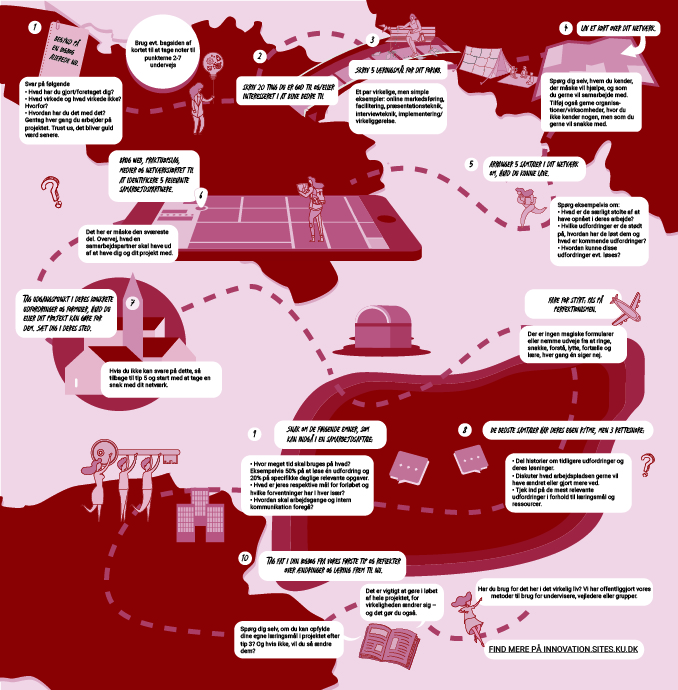In this method, participants develop different innovative project ideas in a process that starts with their backgrounds, experiences and existing competencies and ends with learning objectives, network cards and potential partners.
Prior to the method of a workshop, participants must answer reformulated questions from the Bird-in-Hand phase from Sarasvathy’s principles of Effectuation: What is your background, what have you worked with before and what did you learn from it? The questions may be supplemented with a video introduction to Effectuation.
At the start of the workshop, a corresponding roadmap, available under downloads, can be handed out along with a template for a logbook. If so, both should be presented briefly. The participants are seated at group tables of 5-6 people from different disciplines.
‘Bird-in-Hand’ is the first of three methods that have been developed in relation to a co-curriculum internship at the University targeted at supporting students in establishing innovative or entrepreneurial academic internships. However, the methods can be used to develop all kinds of projects where the content is based on a combination of academic objectives, partner collaboration(s) and effectuation theory.
About Bird-in-Hand
This phase in effectuation is about creating solutions with the resources available here and now. That means:
- Who are you?
- What do you know?
- Who do you know?
This kind of competence clarification will make it explicit to the students themselves and to others what their academic skills can contribute/be used for. On interdisciplinary courses – where students have to communicate their academic skills to others who have different skills – they can get new perspectives on their own skills and discover new opportunities to put their academic skills into play in new ways (in relation to other areas). This competence clarification helps to make students’ projects emanate from their academic skills.
About Saravathy’s principles for effectuation
Saras Sarasvathy’s theory of Effectuation (2001) describes an approach to making decisions and performing actions in entrepreneurship processes, where the next best step is identified by assessing the resources available in order to achieve the goals, while continuously balancing these goals with resources and actions.


